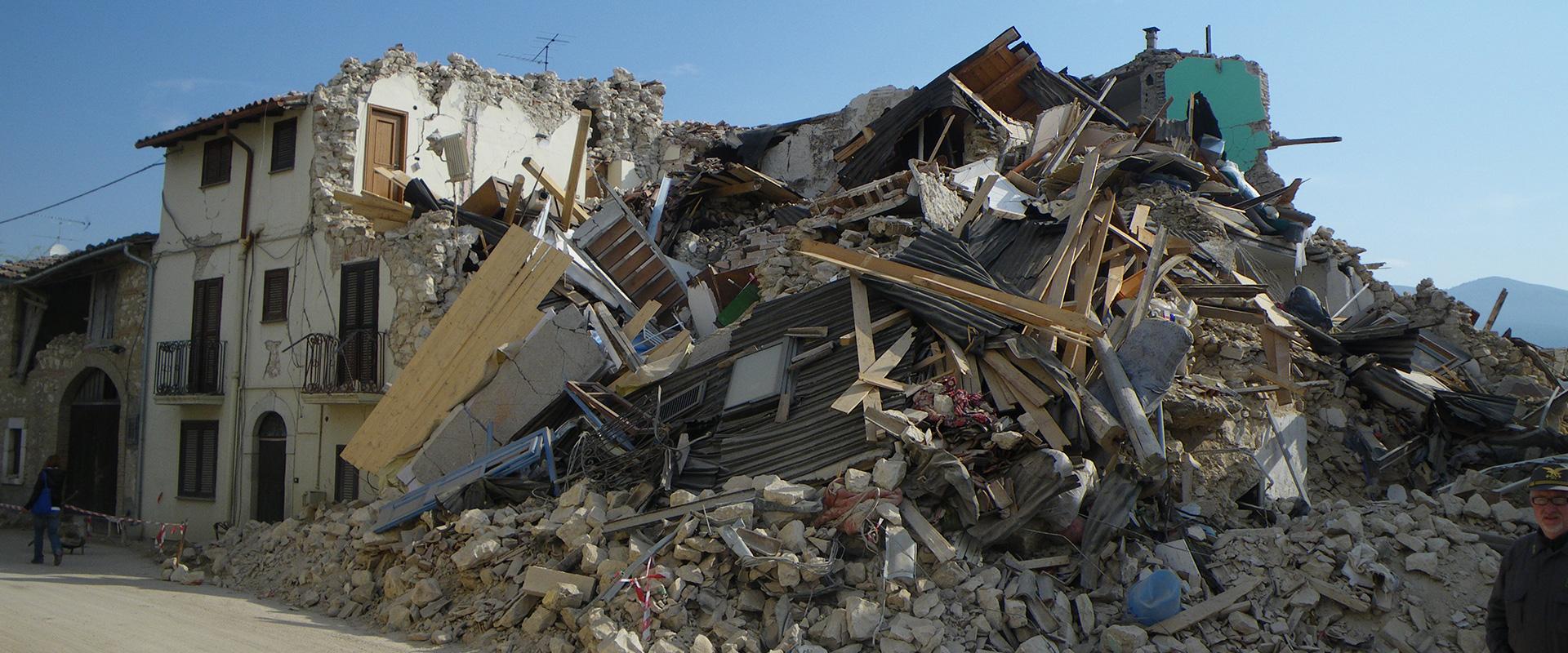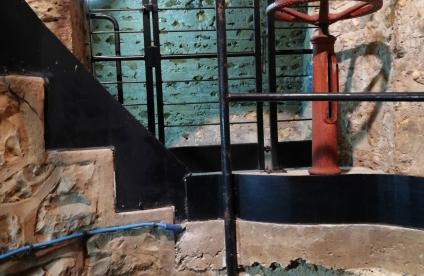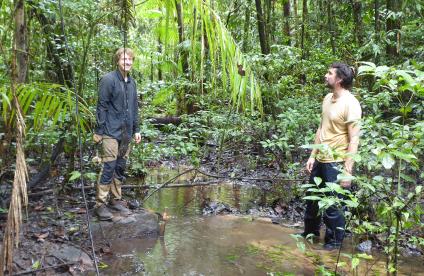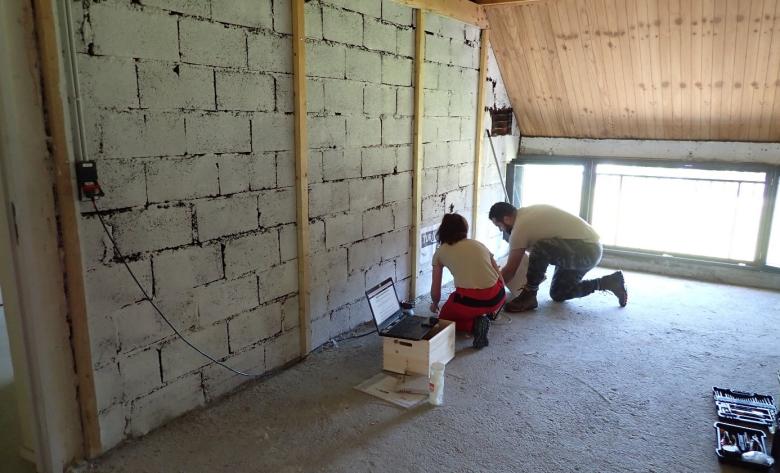
Deployment of a RaspberryShake-4D sensor in a fire station (Bagnères-de-Luchon, 2021).
© BRGM - Isabelle Bouroullec
Objectives and needs
Earthquakes account for more casualties worldwide than any other natural risk. They also account for the second highest annual economic loss, after storms. Between 2006 and 2015, 21 earthquake-related disasters occurred in Europe, leading to 1,049 deaths and an economic loss of 18 billion euros, while also affecting the lives of 284,000 people. Although the general public and decision-makers are becoming increasingly aware of seismic risk in many European countries and perceptions are changing, we still need to reduce the risk by making better use of potential early warning and rapid response systems.
In mainland France, the area of highest seismic activity is the Pyrenees, alongside the Alps. It is classified as an area of moderate risk in France’s regulatory seismic zoning system. For this reason, research into seismic risk is frequently conducted in the Pyrenees. The Pyrenees is one of six study areas selected for the project. The idea is to cover different contexts of seismic activity in Europe, such as the Bucharest region in Romania, the Patras region in Greece and two municipalities in Iceland.
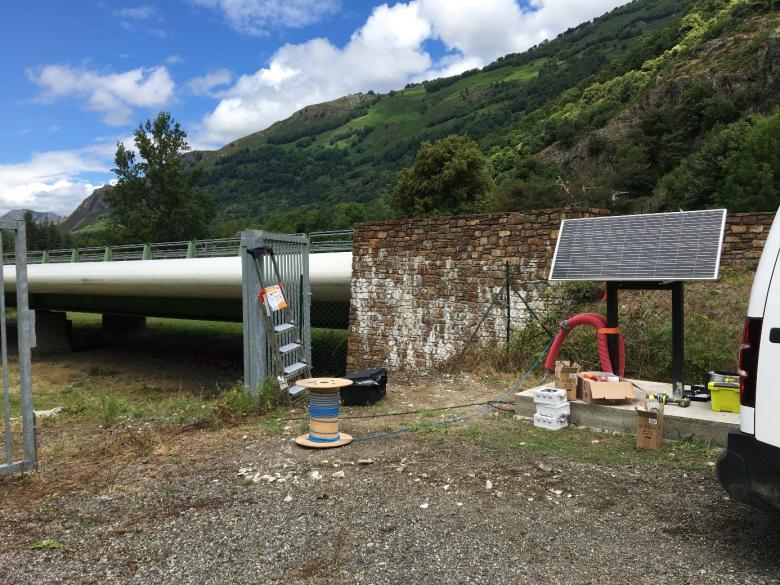
Installation of a solar panel providing a standalone power supply for the seismic sensors on the bridge (Fos, 2021).
© BRGM - Alison Colombain
Results and use
The objective of this project is to set up a multi-sensor platform for a real-time early warning and response system in the event of an earthquake. The TURNkey project should contribute to reducing seismic risk on different time scales:
- before an earthquake: changes in seismic risk over time,
- during an earthquake: early warning,
- immediately after an earthquake: quantification of seismic movements and possible infrastructure damage (rapid response).
In this context, the Pyrenees was selected as one of six project study areas, for the deployment of "low cost" seismic sensors (RaspberryShake-4D accelerometers). Working alongside the existing accelerometer network, these sensors can be installed inside or near critical structures or infrastructures. Implementing a continuous data flow in real time makes it possible to characterise the vibrations induced in the event of an earthquake and to detect potential damage rapidly.
The implementation of the TURNkey platform allows for the collection of a heterogeneous set of data from several sources:
- RaspberryShake-4D seismic sensors for acceleration measurement;
- GNSS (Global Navigation Satellite System) sensors for measuring permanent movement;
- macroseismic evidence;
- LastQuake and Earthquake Network mobile apps (crowdsourcing).
These data are then integrated and processed by the platform to provide a range of information, including: updated probability of an earthquake occurring in the area, real-time early warning, and maps showing seismic movement and potential damage in the event of an earthquake.
BRGM's role
As a key partner in the project, BRGM is in charge of the technical component of rapid response, i.e. the development of a system to update seismic movement maps (shakemap) and to predict damage and loss, based on feedback from the field immediately after an earthquake.
To this end, it has developed an approach based on Bayesian networks. The idea is to fuse information from uncertain predictive models with the tangible but partial observations received from the multi-sensor system during an earthquake. This probabilistic approach is applied at different levels, concerning:
- The natural risk, for the production of shakemaps;
- A structure (such as a bridge), to predict potential damage based on the measurements taken by sensors installed on the structure;
- An infrastructure (e.g. a road network system), to predict the loss of network connectivity and identify the routes to be preferred for crisis management.
BRGM is also responsible for actions in the Pyrenees study area. To this end, it has deployed 14 RaspberryShake-4D stations:
- To the east of the Pyrenees, six stations have been installed along the high-speed track between Perpignan and Figueras (in collaboration with the LFP Perthus rail company): these sensors are able to better characterise seismic movements close to critical spots;
- In Bagnères-de-Luchon, five stations have been installed in the fire station and in Edmond-Rostand secondary school (collaboration with the SDIS 31 fire service and the Toulouse Education Authority): these sensors measure the structural response of the buildings in order to provide information on any changes to their dynamic properties following an earthquake;
- Near Fos, three stations have been installed on the N125 bridge over the Garonne river: these sensors also allow continuous monitoring of the dynamic characteristics of the bridge itself.
The Bagnères-de-Luchon region is therefore a pilot site for testing and implementing data processing methods to produce rapid response tools (shakemaps, distribution of damage and losses in the event of an earthquake).
Installation of seismic sensors by BRGM in critical infrastructure in the Pyrenees
Partners
- Stiftelsen NORSAR, Norway (Coordinator)
- University of Iceland, Iceland
- University of Strathclyde, United Kingdom
- Bauhaus-Universität Weimar, Germany
- Universidad de Alicante, Spain
- Anglia Ruskin University, United Kingdom
- Università degli Studi di Bergamo, Italy
- University College London, United Kingdom
- University of Patras, Greece
- EUCENTRE Foundation, Italy
- BRGM, France
- Royal Netherlands Meteorological Institute, Netherlands
- National Institute for Earth Physics, Romania
- National Observatory of Athens, Greece
- Euro-Mediterranean Seismological Centre, France
- Stichting Deltares, Netherlands
- Yetitmoves SRL, Italy
- Gempa GmbH, Germany
- Siminn hf., Iceland
- BETA 80 Spa Software e Sistemi, Italy
- Nutcracker Research Ltd, United Kingdom
To find out more
-
Project website
-
Scientific publication on the critical analysis of existing rapid response systems
-
Scientific publication on the use of social media for rapid calibration of macro-seismic intensity maps
-
Scientific publication on a seismic risk analysis in the region of Bagnères-de-Luchon
-
Scientific publication on the expression of the needs of emergency teams with regard to warning systems

